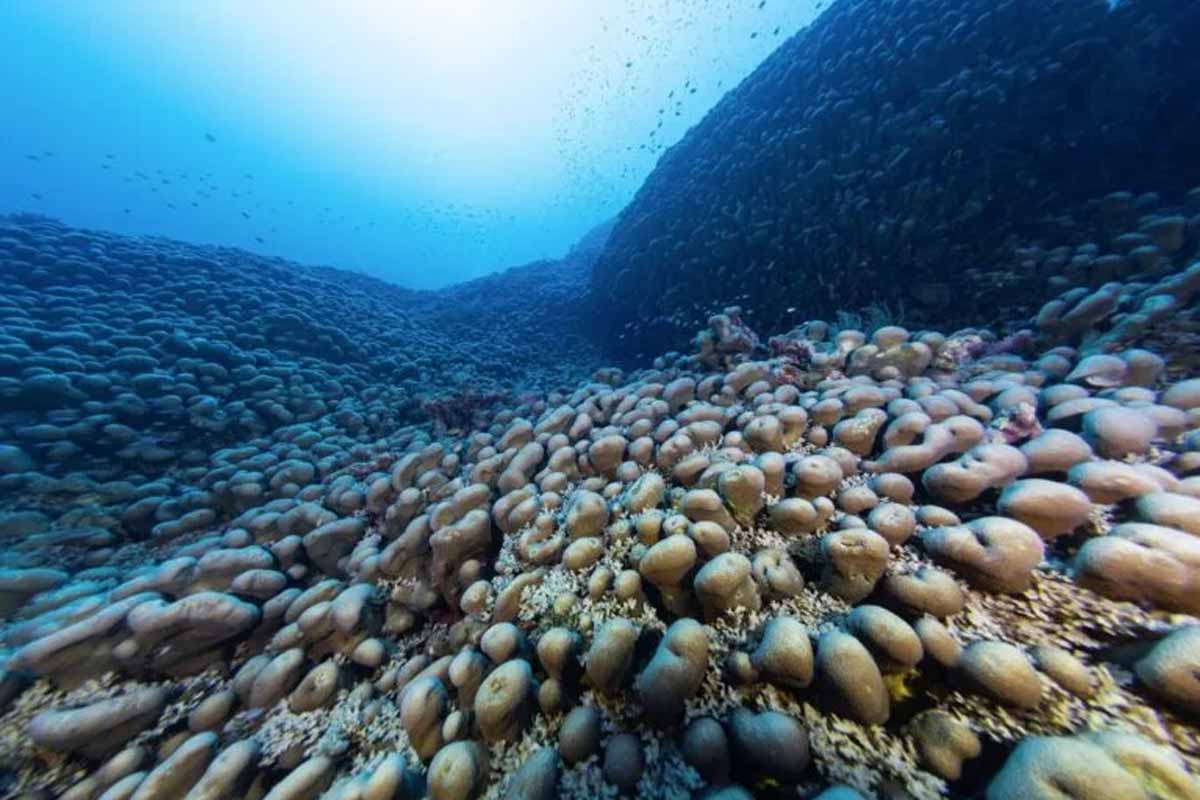A colossal find now shifts attention from the stars to the seafloor. Divers reveal an entity so vast that it rewrites what endurance can look like under pressure. The team moved methodically, recorded every clue, then surfaced with a story that feels improbable yet concrete. At its heart stands an underwater creature whose presence challenges our instincts about what moves, grows, and persists below the waves. The mystery deepens because the ocean kept it hidden in plain sight, while centuries quietly shaped its living architecture.
A giant revealed where few expected to find answers
Underwater exploration often seems secondary to space, although both demand grit, discipline, and calm thinking under stress. On this dive, veteran explorer Manu San Félix sought life, not cables to fix, while currents pulsed and instruments hummed. He swam far from the decompression zone, scanning a shadow too orderly to be chance.
Initial notes marked it as a shipwreck, which made sense because the silhouette had mass and edges. Yet the geometry refused rust, and the forms looked sculpted by growth, not bolts. Curiosity won. He descended again, traced contours with light, and noticed surfaces that breathed through tiny mouths.
Those mouths belonged to polyps. The “wreck” was alive, collective, and slowly pulsing. One sight forced a rethink: this singular organism behaved like a city of cells, not scrap. The designation flipped from debris to being, and a new scale of wonder entered the logbook for good.
From shipwreck to underwater creature hiding in plain sight
Closer checks identified a coral colony of Pavona clavus, a stony builder known for ridged waves. The colony did not sprawl as a reef; it stood as one immense individual. Divers mapped edges, confirmed continuity, and watched fish slip through folds that glimmered as light shifted.
Dimensions sealed the surprise: roughly 34 meters wide, 32 meters long, and about 5–6 meters high, with a footprint so bold that satellites can pick it out near the Three Sisters in the Solomon Islands. The scale defied habit, because corals thrive in groups, yet here a single body held court.
Local lore might have called it a boulder, which fits the view from the surface when waves flatten detail. Underwater, its texture told the truth. This living mass, mistaken for wreckage, matched the quiet logic of growth layered over centuries, a patient underwater creature hiding in open water.
Age, resilience, and what centuries can build
Estimates place its age between 300 and 500 years, which means it started when Napoleon shaped headlines. That span includes storms, heat spikes, and bleaching pulses. The colony persisted while neighboring reefs faltered, likely thanks to depth, currents, and hard-won physiological tolerance.
Survival at that scale suggests slow, steady calcification coupled with periodic pauses during stress, which protects structure while conditions reset. Morphology remains stable, though edges adapt, and the whole mass keeps knitting new polyps on older bones. That steady rhythm explains why its outline holds.
Because longevity stores memory in calcium, scientists see a record of ocean change trapped in layers. Each ridge whispers about temperature, nutrients, and light. When a single underwater creature encodes centuries of fluctuation, it becomes less a curiosity and more a living archive with lessons to decode.
What threatens a mega-colony and why resilience matters
Heat remains the first danger, since warming drives bleaching and saps energy reserves. Even hardy colonies can fail when stress stacks: higher peaks, longer durations, fewer recovery windows. Equipment trials can also scar habitats when tests turn rough or anchors drag on fragile slopes.
Resilience here is not invincibility; it is margin. Depth buffers heat, currents bring food, and genetics may tilt toward tolerance. Managers can copy those advantages by limiting local stress, curbing runoff, and keeping water clear so photosynthesis stays efficient while seasons swing.
The colony’s endurance offers a template. Sampling can reveal heat-tolerant strains without harming the whole. Restoring with those strains, while cutting local pressure, raises survival odds across reefs. When one underwater creature teaches practical tactics, preservation stops being abstract and becomes a plan with steps.
Why this underwater creature reframes ocean priorities
Discoveries like this change where we look for answers. Space inspires, while the seafloor still hides systems that stabilize climate, feed communities, and anchor culture. This colony’s visibility from orbit underscores its size, although its real value flows through daily coastal life.
Big structures attract attention, yet small choices keep them safe: gentle anchoring, smart moorings, careful testing, and fishing that respects nursery zones. Each action preserves function while science studies pattern, timing, and repair. Progress accelerates because protection clears the noise.
When a living landmark survives wars, heat waves, and modern tools, it earns guardians. Research deepens, reserves expand, and local stewardship gains momentum. Because this underwater creature turns patience into architecture, it nudges policy toward long horizons, where maintenance beats heroics and continuity beats spectacle.
Centuries of growth point to choices we must make now
This living mass proves that endurance is possible when conditions allow recovery and stress stays manageable. The story starts with awe, then moves toward responsibility, because beauty without protection fades. A single underwater creature should not carry the burden alone; many must thrive so oceans can keep their balance and promise.
